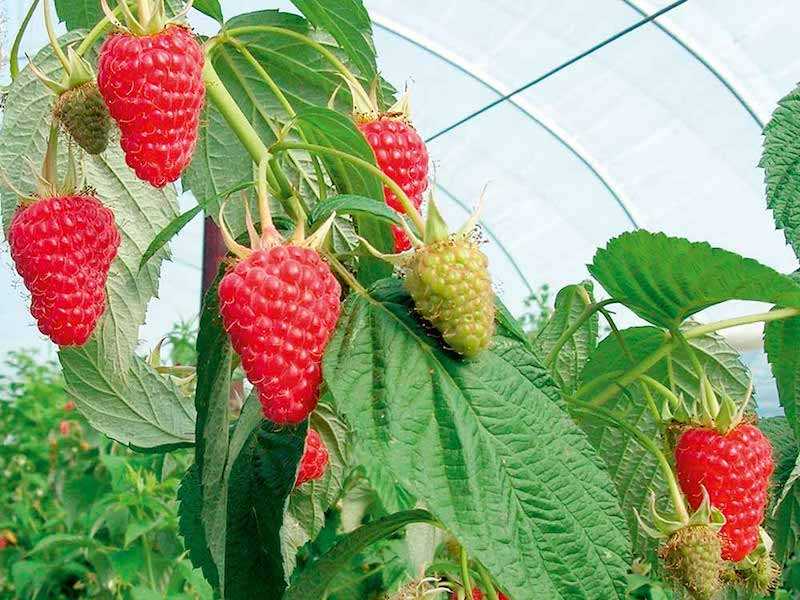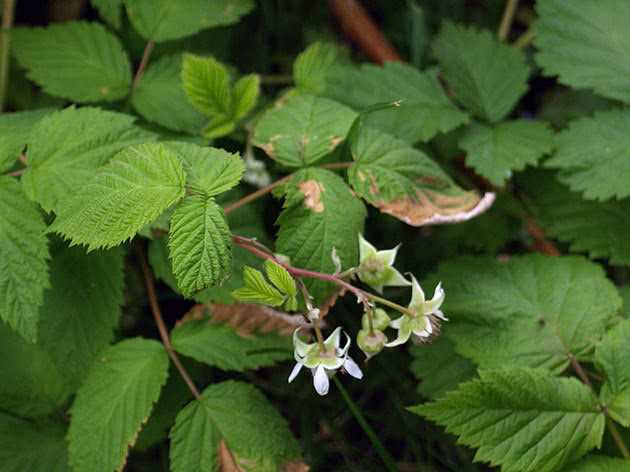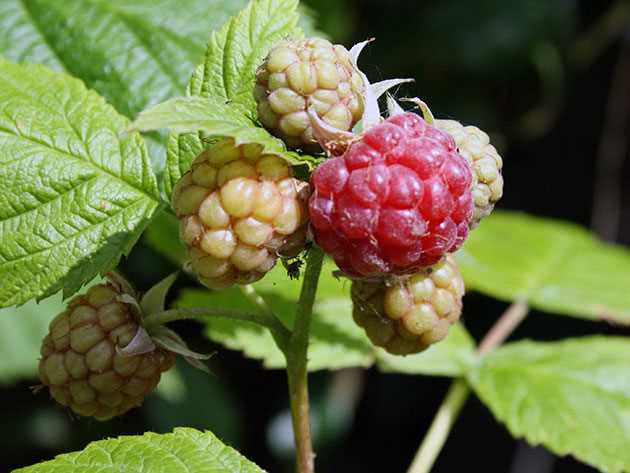- Choosing the Right Variety
- Preparing the Soil
- Planting in Autumn
- 1. Choose the right variety
- 2. Prepare the soil
- 3. Planting the raspberries
- 4. Mulching
- 5. Watering and care
- 6. Pruning
- Proper Spacing and Depth
- Watering and Mulching
- Pruning and Training
- 1. Pruning
- 2. Training
- Harvesting and Care Tips
- Timing:
- Technique:
- Care Tips:
- Question-answer:
- When is the best time to plant remontant raspberries?
- Can I plant remontant raspberries in the spring?
- Do remontant raspberries need full sun?
- What kind of soil do remontant raspberries prefer?
- How often should I water remontant raspberries after planting?
- Video: Watch This Before Planting Raspberries | Pruning Fall Bearing Heritage Raspberries | Guten Yardening
Are you looking to add some delicious and nutritious berries to your garden? Look no further than remontant raspberries! These versatile plants not only offer a bounty of tasty fruit but also have the added benefit of producing two crops in one year. Planting remontant raspberries in the autumn can be a great way to get a head start on next year’s harvest.
When it comes to planting remontant raspberries, timing is key. Autumn is the perfect time to get these plants in the ground, as it allows them to establish their root systems before the winter weather sets in. The cooler temperatures and increased moisture of the fall season create an optimal environment for growth.
Before planting, it’s important to choose a suitable location for your raspberries. These plants thrive in well-drained soil with plenty of sunlight. Consider preparing the soil in advance by removing any weeds or rocks and adding organic matter to improve its fertility and drainage.
Once you have found the perfect spot, it’s time to start planting. Dig a hole that is deep and wide enough to accommodate the roots of the raspberry plants. Place the roots in the hole and backfill with soil, gently firming it around the plant. Be sure to water the newly planted raspberry bushes thoroughly to help them settle in.
By following these time-tested recommendations, you can ensure a successful autumn planting of remontant raspberries. Before you know it, you’ll be enjoying a bountiful harvest of delicious berries that will delight your taste buds and provide a nutritious treat for you and your family.
Choosing the Right Variety

When it comes to planting remontant raspberries in autumn, selecting the right variety is crucial for a successful harvest. There are several factors to consider when choosing which variety to grow:
- Climate: Different varieties of remontant raspberries have different climate preferences. Some are more cold-hardy, while others are better suited for warmer climates. Consider the average temperatures and the length of your growing season to select a variety that will thrive in your specific area.
- Yield: The yield of remontant raspberries can vary between varieties. Some produce larger berries, while others may have a higher overall yield. Determine your specific goals and preferences, whether it’s for personal consumption or for selling the berries, to choose a variety that will meet your expectations.
- Flavor: The flavor of raspberries can vary greatly between different varieties. Some have a sweeter taste, while others may have a more tart or intense flavor. Consider your personal preference and how you plan to use the berries, whether it’s for fresh consumption, baking, or making preserves.
- Disease Resistance: Remontant raspberries are susceptible to various diseases and pests. Look for varieties that are known for their resistance to common raspberry diseases, such as raspberry leaf spot or raspberry crown gall. Choosing disease-resistant varieties can help ensure a healthier and more productive plant.
| Variety | Climate Preference | Yield | Flavor | Disease Resistance |
|---|---|---|---|---|
| Tulameen | Temperate | High | Sweet | Good |
| Heritage | Temperate | Medium | Tart | Good |
| Autumn Bliss | Temperate | High | Sweet | Good |
| Polka | Temperate | High | Sweet | Excellent |
| Joan J | Temperate | Medium | Tart | Very Good |
It’s always a good idea to do some research and consult local gardening experts or nurseries to find out which varieties are most suitable for your specific location. By selecting the right variety, you’ll set yourself up for a successful and fruitful raspberry harvest.
Preparing the Soil
Before planting remontant raspberries in autumn, it is essential to prepare the soil properly. This step plays a crucial role in providing the plants with a favorable environment for healthy growth and maximum fruit production. Here are some expert gardener’s time-tested recommendations for soil preparation:
- Clear the area: Begin by clearing the planting area of any existing vegetation, such as weeds or grass. Removing these unwanted plants will prevent them from competing with the raspberries for nutrients and water.
- Loosen the soil: Use a garden fork or a tiller to loosen the soil to a depth of about 8-10 inches. This helps improve the soil’s texture, allowing better root penetration and water drainage.
- Remove rocks and debris: While loosening the soil, make sure to remove any rocks, roots, or debris that may hinder the raspberry plants’ growth.
- Test the soil pH: It is important to check the soil pH before planting raspberries. The optimal pH range for remontant raspberries is between 5.5 and 6.5. If the pH is too low or too high, you may need to adjust it by adding lime to raise the pH or sulfur to lower it.
- Improve soil fertility: Adding organic matter, such as well-rotted compost or aged manure, can help improve the soil fertility. Spread a layer of organic matter over the planting area and mix it into the loosened soil.
- Consider soil drainage: Remontant raspberries prefer well-drained soil. If your soil has poor drainage, you can amend it by incorporating sand or perlite to improve the soil structure and drainage.
By following these soil preparation recommendations, you can create an optimal growing environment for your remontant raspberries and ensure their healthy development. Remember that proper soil preparation is a crucial step in achieving a successful raspberry harvest.
Planting in Autumn
Autumn is an excellent time to plant remontant raspberries. The soil is still warm after the summer, which helps the plants establish their roots before the winter frost sets in. Here are some expert recommendations for planting remontant raspberries in autumn.
1. Choose the right variety
Before planting, it’s important to choose the right variety of remontant raspberries for your garden. Consider factors such as fruit size, flavor, and disease resistance. Some popular remontant raspberry varieties include ‘Autumn Bliss,’ ‘Heritage,’ and ‘Polka.’
2. Prepare the soil
Prepare the soil by removing any weeds or grass from the planting area. Loosen the soil to a depth of about 12 inches and mix in compost or well-rotted manure to improve drainage and fertility. Remontant raspberries prefer well-drained soil with a pH level between 5.6 and 6.2.
3. Planting the raspberries
Dig individual planting holes for each raspberry plant, spacing them about 2 to 3 feet apart. Place the raspberry plant in the hole, making sure the roots are spread out and covered with soil. Firmly press the soil around the base of the plant to remove any air pockets.
4. Mulching

After planting, apply a layer of mulch around the base of the raspberry plants. This will help retain moisture in the soil and control the growth of weeds. Use an organic mulch such as straw or wood chips, and spread it to a depth of about 3 to 4 inches.
5. Watering and care
Water the newly planted raspberry plants thoroughly after planting to settle the soil. Keep the soil consistently moist but not saturated throughout the growing season. Raspberries require about 1 inch of water per week. Fertilize the plants in early spring with a balanced fertilizer to promote healthy growth.
6. Pruning
In late winter or early spring, before new growth starts, prune the remontant raspberry canes. Remove any dead or damaged canes, as well as any weak or crowded ones. Leave about 4 to 5 strong canes per plant, cutting them back to a height of about 6 to 8 inches.
By following these expert recommendations, you can ensure successful planting of remontant raspberries in autumn. Enjoy a bountiful harvest of delicious raspberries from your garden next year!
Proper Spacing and Depth
When planting remontant raspberries in autumn, it is important to consider the proper spacing and depth to ensure healthy growth and abundant harvest. Follow these recommendations for optimal planting:
- Spacing: Plant remontant raspberry plants approximately 2-3 feet apart in rows that are spaced 6-8 feet apart. This spacing allows enough room for the plants to spread and grow without overcrowding, ensuring proper airflow and sunlight penetration.
- Depth: Dig a planting hole that is wide and deep enough to accommodate the roots of the remontant raspberry plant. The hole should be approximately twice as wide as the root ball and deep enough so that the plant sits at the same level as it was growing in the nursery or container.
Proper spacing and depth are crucial for the successful establishment and growth of remontant raspberry plants. Following these recommendations will help create an ideal environment for the plants to thrive and produce abundant fruit.
Watering and Mulching

Proper watering is essential for the successful growth of remontant raspberries. These plants have shallow root systems, so they require regular and consistent moisture. Here are some tips to follow when watering:
- Water the plants deeply at least once a week, providing enough moisture to penetrate the root zone.
- Avoid overhead watering, as it can lead to leaf diseases. Instead, use a drip irrigation system or a soaker hose to deliver water directly to the roots.
- Monitor the moisture level of the soil regularly, especially during dry periods. Stick your finger into the soil to check if it feels dry up to the first knuckle. If it does, it’s time to water.
In addition to proper watering, mulching is another important practice to consider for growing remontant raspberries:
- Apply a layer of organic mulch, such as wood chips or straw, around the base of the plants. Mulching helps retain moisture in the soil, controls weeds, and maintains a more stable soil temperature.
- Avoid piling the mulch too close to the raspberry canes to prevent moisture buildup and the potential for disease. Keep the mulch at least a few inches away from the plant stems.
- Replenish the mulch as needed throughout the growing season to maintain an adequate layer.
By following these watering and mulching practices, you can create optimal growing conditions for your remontant raspberries and enjoy a bountiful harvest.
Pruning and Training
1. Pruning
Pruning is an important aspect of growing remontant raspberries. It helps maintain the health and productivity of the plants and ensures proper airflow and light penetration. Here are some key points to remember:
- Prune remontant raspberries twice a year, in early spring and late summer.
- In early spring, remove any dead, damaged, or diseased canes. Cut them down to ground level.
- Thin out the remaining canes, leaving only the strongest and healthiest ones.
- During late summer, after the fruiting period, prune the canes that have already produced fruit. Cut them down to ground level.
- Prune any weak or overcrowded canes to allow room for new growth.
2. Training
Training remontant raspberries is crucial for proper growth and support. It helps prevent the canes from leaning or breaking under the weight of the fruit. Here are some tips for training remontant raspberries:
- Install a trellis system before planting the raspberries. A trellis provides support and ensures proper airflow.
- Train the canes along the trellis as they grow. Gently tie them to the trellis using soft plant ties.
- Space the canes evenly along the trellis to prevent overcrowding.
- Regularly check and adjust the ties to ensure the canes are secure but not constricted.
- Prune and train the canes throughout the growing season to maintain an orderly and productive raspberry patch.
Harvesting and Care Tips
Harvesting remontant raspberries requires careful attention to timing and technique. Here are some tips to help you get the most out of your raspberry harvest:
Timing:
- Remontant raspberries produce two crops per year, one in early summer and another in autumn. The autumn crop tends to be larger and more productive.
- Wait until the raspberries are fully ripe before harvesting. Look for a deep red color and an easily detachable fruit.
- Harvesting in the cool morning or evening hours can help preserve the flavor and quality of the berries.
Technique:
- Gently pluck the ripe raspberries from the plant, being careful not to crush or damage them.
- If the raspberries do not detach easily, they may not be fully ripe. Wait a few more days before attempting to harvest them.
- Use a clean container or basket to collect the harvested raspberries, taking care not to stack them too high and crush the bottom layers.
- Handle the raspberries with care to prevent bruising and preserve their freshness.
Care Tips:
- After harvesting, promptly store the raspberries in the refrigerator to extend their shelf life.
- Do not wash the raspberries until you are ready to consume them, as excess moisture can lead to spoilage.
- Remove any damaged or moldy raspberries from the batch to prevent the spread of mold to other berries.
- Regularly water the raspberry plants, especially during dry periods, to ensure proper growth and fruit production.
- Apply a layer of mulch around the plants to help retain moisture, suppress weeds, and provide insulation during cold weather.
By following these harvesting and care tips, you can enjoy a bountiful and delicious harvest of remontant raspberries from your garden. Happy gardening!
Question-answer:
When is the best time to plant remontant raspberries?
The best time to plant remontant raspberries is in autumn after the first frost.
Can I plant remontant raspberries in the spring?
While it is possible to plant remontant raspberries in the spring, it is generally recommended to plant them in autumn to allow them to establish a strong root system before the growing season.
Do remontant raspberries need full sun?
Remontant raspberries do best in full sun, as they require at least six hours of direct sunlight each day to produce a good crop.
What kind of soil do remontant raspberries prefer?
Remontant raspberries prefer well-draining soil that is rich in organic matter. They do best in slightly acidic soil with a pH level between 6.0 and 6.5.
How often should I water remontant raspberries after planting?
After planting, remontant raspberries should be watered deeply at least once a week, especially during dry periods. It is important to keep the soil evenly moist, but not waterlogged.







